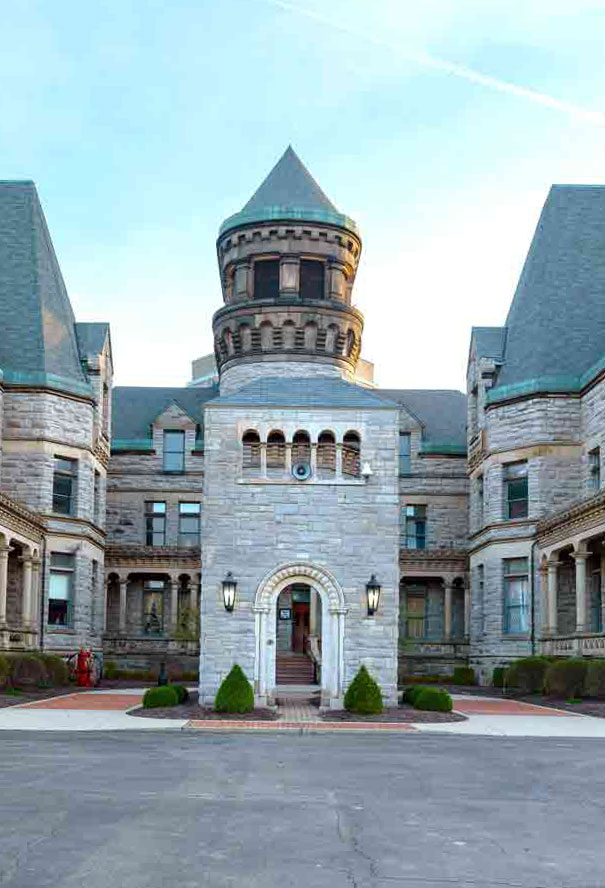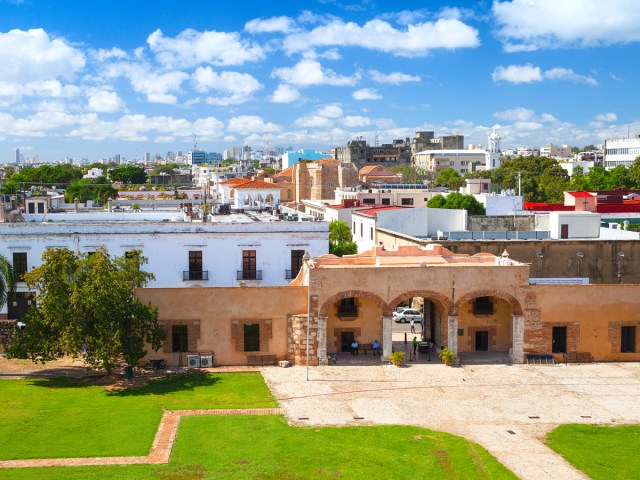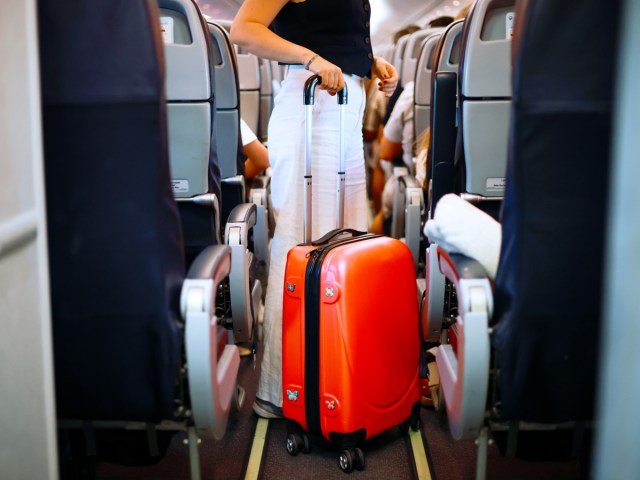Spoiler alert: Most movies aren’t filmed where they’re set. Even so, location shooting isn’t quite a lost art — just ask the Rocky superfans who have made the pilgrimage to those famous steps of the Philadelphia Art Museum. Indeed, utilizing real places can deepen the viewer’s sense of immersion in the story. That is especially true on the rare occasions when a location becomes as iconic as the movie in which it appears. Consider yourself a film buff? Check out these seven movie buildings that are ready for their closeup.
Griffith Observatory – Los Angeles, California
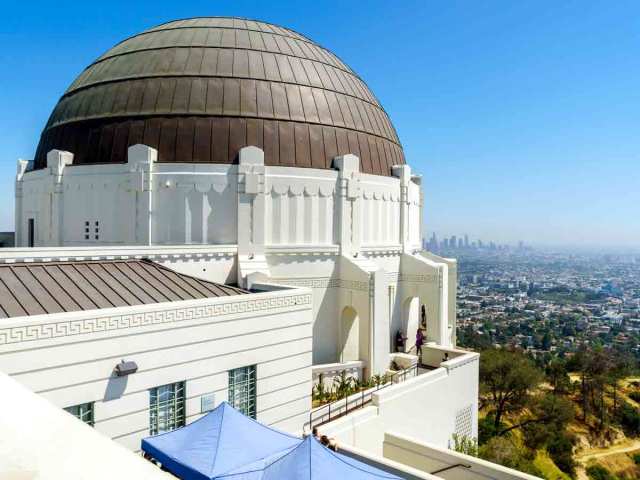
You don’t have to be a fan of 1955’s Rebel Without a Cause to enjoy the stunning view of Los Angeles offered by Griffith Observatory, but it helps. Director Nicholas Ray’s era-defining drama made James Dean even more of a silver-screen icon than his Oscar-nominated turn in East of Eden (1955), not least because the actor died just a month before its release. Two key scenes were filmed at Griffith: a field trip featuring a knife fight between Dean’s character and another teen and the tragic finale in which a wayward youth meets his untimely end.
While far from the only movie the observatory appears in — The Terminator (1984), Back to the Future (1985), and La La Land (2016), to name a few — Rebel Without a Cause is the one most associated with the L.A. landmark, so much so that it now includes a bust of Dean.
Katz’s Delicatessen – New York, New York
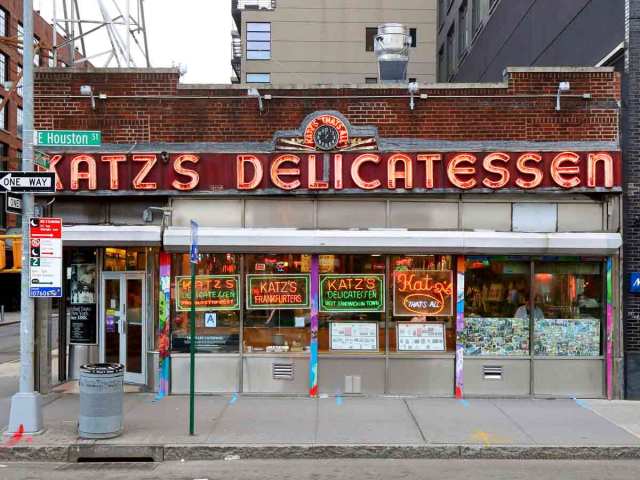
If you’d like to have what she’s having, there’s only one place to do so: Katz’s Delicatessen. The most famous scene in When Harry Met Sally (1989) — which is saying a lot, given that it’s one of the most beloved romantic comedies ever made — takes place in the equally beloved restaurant, which is arguably the best deli in New York (at least according to the Zagat New York City Restaurant Survey). Katz’s is especially famous for its pastrami on rye, which has been drawing visitors and native New Yorkers into the deli for decades. With that in mind, it’s no surprise that When Harry Met Sally isn’t the only movie to have been filmed there: Donnie Brasco (1997), We Own the Night (2007), and Across the Universe (2007) all include scenes at the kosher-style deli as well.
Dallas City Hall – Dallas, Texas
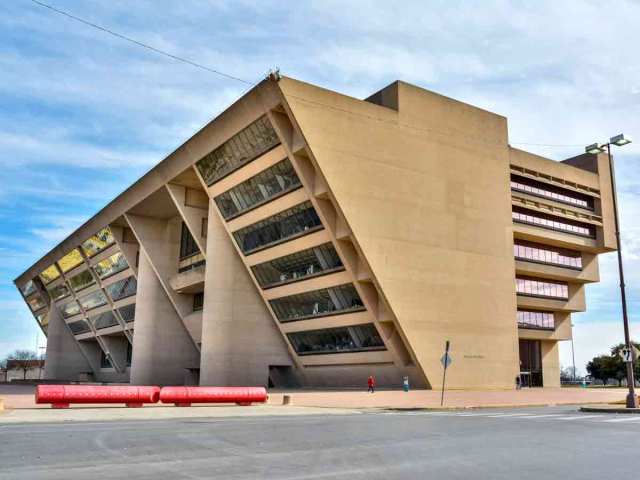
Despite being perhaps the most well-known movie set in Detroit, RoboCop (1987) wasn’t actually filmed there. The production actually took place on location in Dallas, most famously City Hall. The government building stood in as the megacorporation Omni Consumer Products’ headquarters, which is where the murdered police officer played by Peter Weller is revived as RoboCop himself; it’s also where the ED-209 droid malfunctions with fatal results in one of the film’s most memorable scenes.
Ohio State Reformatory – Mansfield, Ohio

Some film settings are so vital to the plot that they almost become characters unto themselves. One case in point is The Shawshank Redemption (1994), Frank Darabont’s adaptation of Stephen King’s novella Rita Hayworth and Shawshank Redemption. The prison drama was filmed almost entirely at the Ohio State Reformatory, also known as Mansfield Reformatory, which was added to the U.S. National Register of Historic Places in 1983.
In operation from September 15, 1896 until 1990, when a federal court order ruled that it be closed, it has since been restored and now offers tours four days a week. Many other movies, television shows, and even music videos have been shot at the reformatory, but none of them feature as prominently in those tours — or the prison’s legacy — as Shawshank.
Fox Plaza – Los Angeles, California
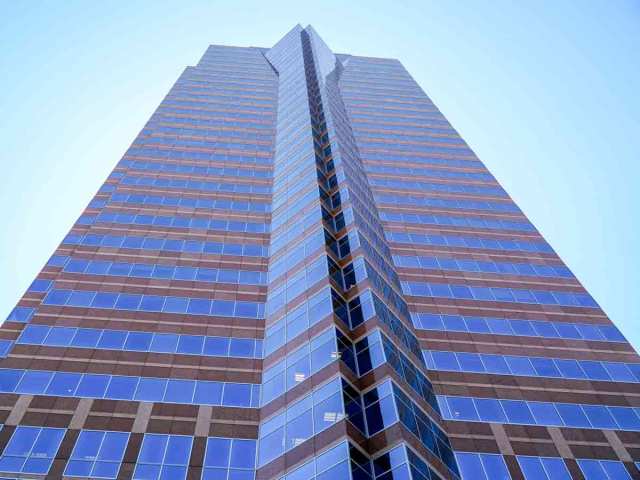
One needn’t wade into the “Is it a Christmas movie?” debate to acknowledge that Die Hard (1988) ranks among the best action flicks of all time. Diehard fans (sorry) of the classic starring Bruce Willis have come to love the fictional Nakatomi Plaza almost as much as John McLane himself, with the skyscraper even making its way into video games. 20th Century Fox was producing the film at the same time that its own Fox Plaza was being completed in Century City, making for the perfect shooting location. For plot reasons, the building needed to be empty.
It wasn’t easy logistically — daytime filming wasn’t allowed, nor was blowing anything up — but it did come together wonderfully. That’s thanks in part to the fact that screenwriter Steven E. de Souza was able to use the building’s blueprints while mapping out the story, thus allowing viewers to become as familiar with Nakatomi Plaza’s inner workings as the characters do.
The Dakota – New York, New York
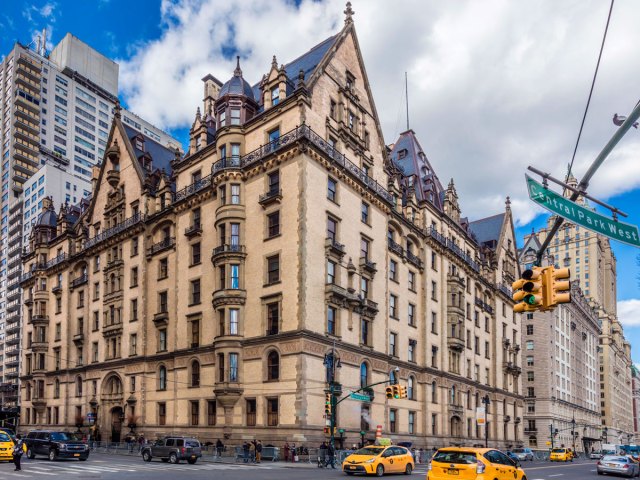
One of the scariest movies ever made, Rosemary’s Baby (1968), is transportive from its opening credits. While that’s mostly due to the haunting song sung by star Mia Farrow, the looming presence of the apartment building where most of the narrative takes place adds to the unease. Called the Bramford in the film, the exteriors were shot at the Dakota, which was completed in the early 1880s in the Renaissance Revival style.
Long popular with artists, the building has been home to everyone from Judy Garland and Boris Karloff to Lauren Bacall and Jack Palance; not all of its history is of the happy variety, however, as one of the Dakota’s most famous residents, John Lennon, was shot and killed in its archway. The Dakota still stands today, and has been designated as both a New York City Landmark and U.S. National Historic Landmark.
The Bradbury Building – Los Angeles, California
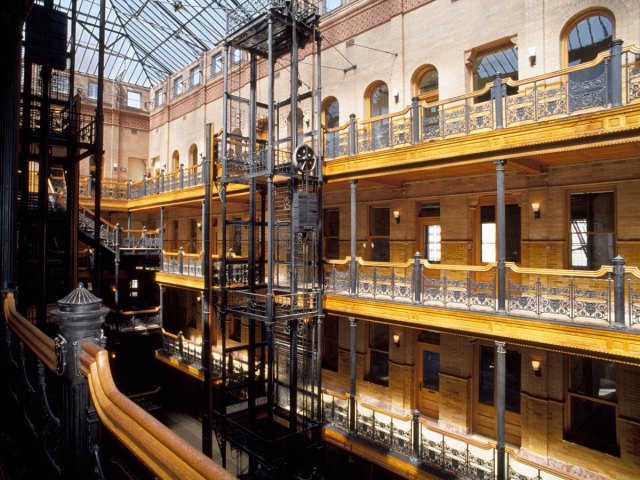
While it’s accurate to call the Bradbury Building a shooting location for Blade Runner (1982), it’s also downplaying the architectural landmark’s legacy. The building has been featured in dozens of movies and television shows, from M (1931) and Chinatown (1974) to Pushing Daisies (2007) and The Artist (2011). But its use in Ridley Scott’s sci-fi classic is especially memorable. (The name, however, has nothing to do with sci-fi luminary Ray Bradbury — the building bears the name of Lewis L. Bradbury, the millionaire who commissioned it in 1892.)
Even so, the building’s near-ubiquity led to some skepticism when Scott first announced his plans to film there. “‘The Bradbury Building? But everyone on TV uses it!’” the filmmaker said of the initial response. “But I said, ‘Back off! I’m gonna use it and I’m gonna shoot it in a way you have never seen before.’” That’s exactly what he did in Blade Runner’s climactic sequence; the off-kilter backdrop lends the film’s final moments much of their strange poignancy.
More from our network
Daily Passport is part of Inbox Studio, which publishes content that uplifts, informs, and inspires.






